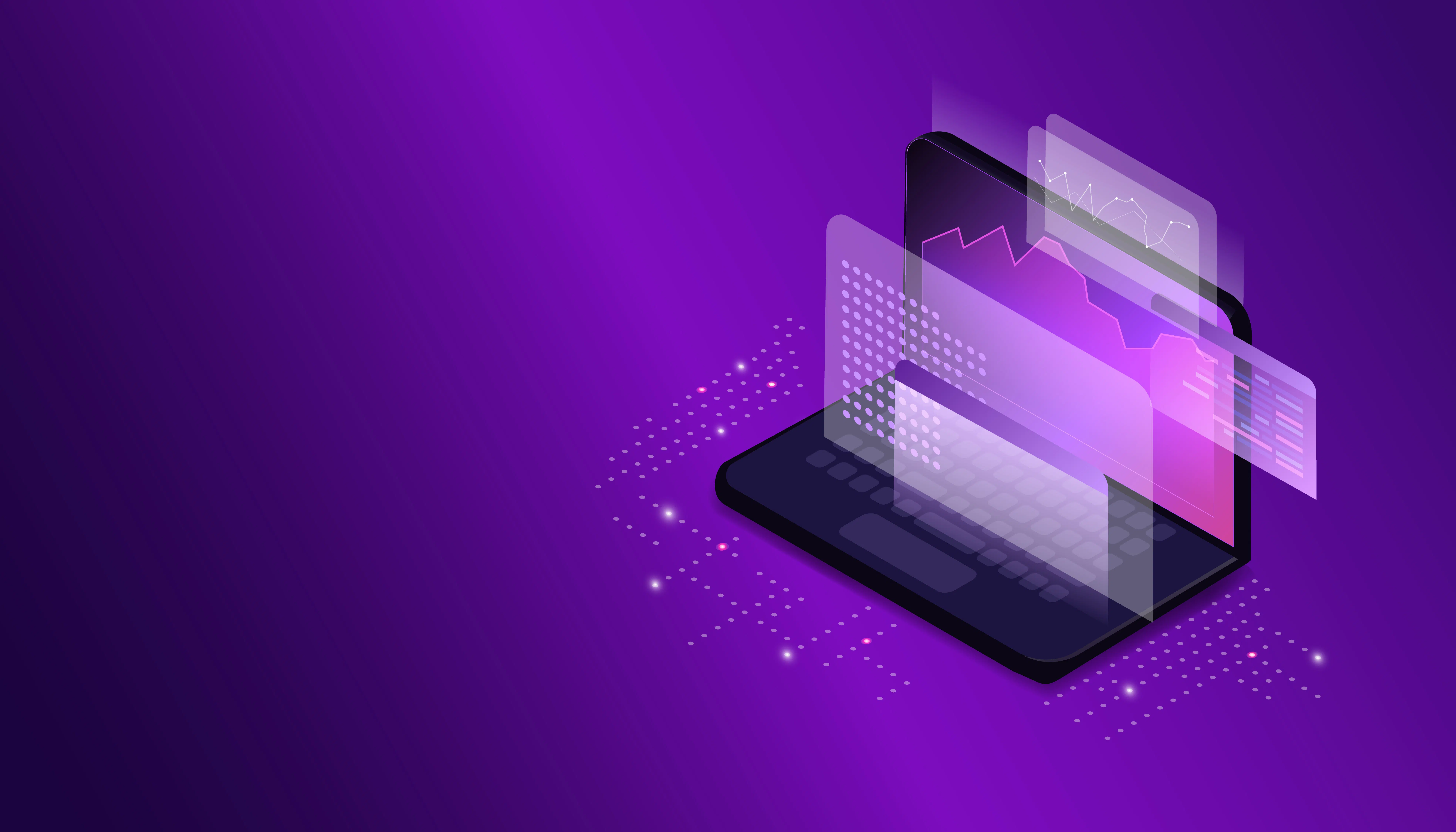From user enablement and product adoption to customer success, product knowledge has the power to achieve the most critical company goals.
But at the same time, delivering product content has never been more challenging. Organizations are turning to agile methods with ever-shorter release cycles, and new versions arriving every month, every week, or even every day.
According to Gartner, 47% of professionals waste time sifting through documentation and knowledge sources, struggling to find information. As a business, the last thing you want is unreliable, outdated, and unfindable product answers leading to frustrated customers and increased support costs.
This is where a Content Delivery Platform or CDP comes in.
In this post we’ll define what a CDP is and how it differs from a CCMS. Then we’ll highlight what to look for in a CDP and wrap up by looking at key benefits you can get from implementing one.
What is a Content Delivery Platform?
A Content Delivery Platform is a software solution that collects all your product knowledge from any source – CMS, CCMS, Github, Sharepoint, helpdesk tools, Wikis, – and in any format – DITA, Markdown, YAML, PDF, HTML, Word. It then unifies it into a central knowledge hub and makes that content available to multiple endpoints via Application Programming Interfaces, or APIs.
CDPs are agnostic of authoring tools and offer different ranges of standard and custom connectors, from the most popular CCMSes and document processors to very specific in-house writing systems. As such, CDPs extend the collaborative process of content creation across the organization by including stakeholders that are external to the documentation team.
Advanced CDPs handle both structured and unstructured content.
Beyond omnichannel content publishing, CDPs enable Content-as-a-Service: they allow companies to provide a contextualized, personalized content experience to users on the device and at the touchpoint of their choice.
What is the difference between a CDP and a Component Content Management System?
While both a Content Delivery Platform and a Component Content Management System deal with managing and distributing content, they serve different purposes and target different stages of the content lifecycle.
A Component Content Management System or CCMS is a Content Management System that manages content at a component level rather than at the document level. Components are either words, paragraphs, or series of paragraphs, images, videos, and more. They are tagged with metadata that provides additional information (e.g. the author, audience, product version,…) about the content itself and facilitates content management and searches. In CCMSes, the structure of the content is standardized so that the system can assemble and reuse the different components for different publications. As such, CCMSes enable collaborative and topic-based authoring, as well as a higher content creation productivity.
It’s worth noting that CCMSes only handle and publish the content that was authored within the CCMS itself and exclude all other content (PDF datasheets produced by product managers or marketing documents created with MS Word).
These two solutions complement each other. Fluid Topics, as a leading CDP, integrates seamlessly with various CCMS, and enterprise applications such as Paligo, Ixiasoft, RWS and more.
| Attributes | CCMS | CDP |
|---|---|---|
| Content Creation | Yes | No |
| Content Sources | Exclusively publishes content authored in the tool | Collects and publishes content from various sources and formats |
| Content Type |
Structured | Structured and unstructured |
| Applies document/ page templates | Depending on the delivery mode | Yes |
| Delivery mode | Documents, HTML pages, file exports | APIs and default web portal |
| Endpoints | Multiple - file export to different endpoints | Multiple – Through APIs |
| Fit for AR/VR, chatbots, or processes? | Non applicable | Yes |
| Allows for personalized content | Yes, at content creation | Yes, dynamically, at content delivery |
Who can benefit from a
Content Delivery Platform?
A CDP proves suitable for any organization across various industries (i.e, software, manufacturing, high-tech, financial services, healthcare…). However, it is particularly useful for businesses that:
Manage large and complex knowledge bases: A content delivery platform provides a centralized repository for all knowledge assets that otherwise would be stored over multiple systems, preventing many users from easily accessing it.
Have many different publishing formats: Your organization should allow your tech doc team as well as your marketing team to write content in their preferred tools. A CDP supports multiple formats and provides the same content experience across the board whatever the sources.
Need to update content frequently in multiple places: The accelerating velocity of product launches and the frequency of product updates are two factors impacting the productivity of information development teams and creating new challenges. Through continuous content delivery, a CDP can ensure your content is always up-to-date, across all your channels.
Are looking to implement more personalization: Businesses and end customers expect contextually relevant, personalized, consistent content experiences. A CDP can deliver knowledge to each user according to their profiles, preferences, but also to their behavior.
Are in highly regulated industries: In industries such as financial services, life sciences, pharmaceuticals, and legal, delivering non-compliant content can come with a hefty price tag. A CDP ensures that your documentation is relevant and compliant.
Key features to look for in a CDP solution
As with any technology, choosing the right Content Delivery solution can be overwhelming. Expectations are higher than ever – customers want a tool that is cost-effective and seamlessly integrated into their existing IT landscape, with enterprise-grade security and scalability.
Finding a Content Delivery Platform that meets all these criteria is a challenge. Here are some feature guidelines for choosing the right CDP:
Integration with any content sources and tools: Leading CDPs should provide ready-to-use integrations for all your content sources and tools, such as a tech doc team’s CCMS or a marketer’s Word document, and help overcome your content silos.
GenAI capabilities: In today’s AI-driven world, benefit from the most recent GenAI capabilities to help your tech doc team as well as your support agents and field service engineers.
Out-of-the-box portal: By default, CDPs should provide a turnkey portal with key features, that deploys in minutes, not months.
Autonomous portal configuration: The CDP portal should be simple to configure through settings without requiring interventions from IT, vendor services, or system integrators. The portal should be customizable to your organization’s branding for a better user experience that meets your current and future business needs.
Relevant, Personalized, and Contextual Search: Best-in-class CDPs should offer the most relevant search results in a flash, with advanced features like faceted search, keyword highlighting, synonyms, misspellings, search result clustering, and more, making it faster and easier for all users to surface answers and information.
Interactive Capabilities: Bookmarking, adding comments and notes, delivering feedback, and building personal books are just some of the interactive functionalities that leading platforms offer. While all should be offered as standard, you should have the chance to turn off those not relevant to your organization.
Native Mobile Experience: Users in the field need to be supported on the device they prefer, no matter what that device is. A laptop, a tablet, a smartphone, or AR/VR goggles – your CDP should render text, graphics, 2D and 3D models, and multimedia content consistently and seamlessly.
Offline Mode: Mobile and offline accessibility to your content with a sync capacity for when connectivity is reestablished is crucial to serve your customers.
SEO Capabilities: An online documentation portal can generate organic traffic for your organization if it’s optimized for search engines like Google and Bing. Your CDP should offer an option to activate and customize the way that content is crawled by search engines.
Deep Analytics and Reporting: The best CDPs provide rich and valuable insights into how your technical documentation and product content is performing. Your platform should capture every user interaction with high levels of detail and deep context to drive your content activity with meaningful information and offer better customer service.
Languages: Next-generation CDPs should ensure full support for your global operations with the same speed, relevance, and cutting-edge Natural Language Processing capabilities for all your languages. Make sure that your CDP both supports multi-lingual content and provides user interfaces in the languages that you need.
Why Fluid Topics for Content Delivery?
Fluid Topics is a full-fledged AI-powered Content Delivery Platform that ingests and unifies all yout product information – from manuals to API docs to support articles – no matter the initial source and format. Our solution then delivers the most relevant and personalized content to any digital channel, device, and application, in context with the users’ needs and environment.
As a SaaS solution, the Fluid Topic Platform is designed to integrate with your existing infrastructure and tools to enable dynamic publishing without disrupting the company’s writing process.
Our platform is a game-changing solution for tech doc publishing teams, and it can prove revolutionary for many other teams such as customer support and field service teams, too.
Our solution is currently used by companies like Siemens Building Technologies, JFrog, Hexagon, Teradata, Palo Alto Networks, Precisely, UEFA, Johnson Control, Kone, and many more.
Customers have seen great results with Fluid Topics:
- 50,000 monthly views on the help portal (Source: Darwinbox)
- 34% decrease in support tickets (Source: swissQprint)
- 2 weeks saved in the documentation delivery process (Source: Hexagon)
- 5 million visits on the portal within the first year (Source: Teradata)
Sagar Garuda, Senior Director of Learning at Darwinbox said “Thanks to Fluid Topics and Paligo, content creation and distribution for Darwinbox have become a breeze!”
Aurélien Unfer, Project Manager New Information and Communication Technologies at Liebherr Mining said “Fluid Topics’ Content Delivery Platform provided us with a fully-featured solution that required limited customization to match our needs. The implementation of the platform is an important modernization step that will help remove inefficiencies as well as allow more personalized forms of documentation and up-to-date instructions.”
The right CDP can help overcome the challenges that can otherwise swamp tech doc teams while improving the end-user experience for a clear business win.
If you’d like to explore what our Content Delivery Platform can do for your business, make sure to get in touch with our team.
Latest post








